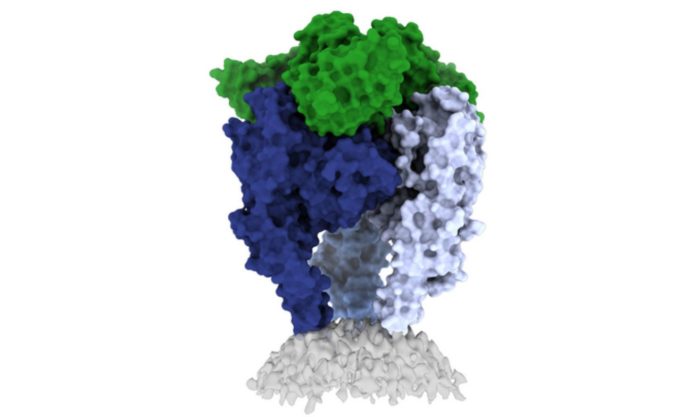Each year, a startling 59,000 people, including many children, are killed by the rabies virus. Some victims, particularly children, are unaware that they have been exposed until it is too late.
The intensive rabies treatment regimen is out of the question for others: therapy is not generally available, and the average $3,800 cost is unimaginable for most people around the world.
Rabies vaccines are far more inexpensive and easier to administer than rabies treatments. However, there is a significant drawback to these vaccines:
“Rabies vaccines don’t provide lifelong protection. You have to get your pets boosted every year to three years,” says Professor Erica Ollmann Saphire, Ph.D. of LJI. “Right now, rabies vaccines for humans and domestic animals are made from killed virus. But this inactivation process can cause the molecules to become misshapen—so these vaccines aren’t showing the right form to the immune system. If we made a better shaped, better structured vaccine, would immunity last longer?”
Saphire and her colleagues, in partnership with a team from the Institut Pasteur led by Hervé Bourhy, Ph.D., may have found the key to better vaccine design. In a new work published today in Science Advances, the authors provide one of the first high-resolution views of the vulnerable “trimeric” version of the rabies virus glycoprotein.
“The rabies glycoprotein is the only protein that rabies expresses on its surface, which means it is going to be the major target of neutralizing antibodies during an infection,” explains Heather Callaway, the study’s first author.
“Rabies is the most lethal virus we know. It is so much a part of our history—we’ve lived with its specter for hundreds of years,” adds Saphire. “Yet scientists have never observed the organization of its surface molecule. It is important to understand that structure to make more effective vaccines and treatments—and to understand how rabies and other viruses like it enter cells.”
The shapeshifter Rabies
Scientists are uncertain as to why rabies vaccines do not provide long-term protection, but they are aware that the vaccine’s shape-shifting proteins are a concern.
The rabies glycoprotein, like a Swiss Army knife, has sequences that unfurl and flip upward when needed. The glycoprotein can switch between pre-fusion (before fusing with a host cell) and post-fusion (after fusing with a host cell) states. It can also degrade, transitioning from a trimer structure (three copies bundled together) to a monomer structure (one copy by itself).
This transformation provides rabies with a form of invisibility. Human antibodies are designed to recognize a specific protein location. They are unable to track when a protein evolves to hide or relocate those locations.
The new research provides scientists with a clear image of the glycoprotein type that should be targeted for antibody protection.
Capturing glycoprotein
Callaway worked for three years to stabilize and freeze the trimeric form of the rabies glycoprotein. Before infecting human cells, glycoprotein takes this “pre-fusion” form.
Callaway combined the glycoprotein with a human antibody, which allowed her to locate one location on the viral structure that is vulnerable to antibody attacks. The researchers then used cutting-edge cryo-electron microscopy equipment at LJI to create a 3D picture of the glycoprotein.
The new 3D structure sheds light on a number of important aspects that experts had previously been unaware of.
Importantly, the structure depicts two essential components of the virus structure, known as fusion peptides, in their natural state.
These two segments connect the glycoprotein’s bottom to the viral membrane, but during infection, they project into the target cell. Getting a steady image of these sequences is quite difficult. In order to capture images of the glycoprotein, other rabies researchers had to chop them off.
Callaway was able to find a solution to this issue by entrapping the rabies glycoprotein within detergent molecules.
“That let us see how the fusion sequences are attached before they snap upward during infection,” Saphire explains.
Now that scientists can see how this virus is put together, they can make better vaccines that tell the body how to make antibodies that will attack the virus.
“Instead of being exposed to four-plus different protein shapes, your immune system should really just see one—the right one,” Callaway adds. “This could lead to a better vaccine.”
Defending against a viral family
Saphire believes that stronger, broader immunity could benefit people who interact with animals on a regular basis, such as veterinarians and wildlife workers, as well as the billions of humans who may come into touch with a rabid animal by accident. Rabies affects a variety of animals, including dogs, racoons, bats, and skunks, and is found on every continent except Antarctica.
This new research could pave the way for a vaccine that protects against the entire lyssavirus genus, which includes rabies and other viruses that can infect humans and other mammals.
More imaging of the rabies virus and its relatives, as well as neutralizing antibodies, will be captured in the next step of this research. According to Callaway, scientists are working on deciphering several of these structures, which could identify antibody targets shared by lyssaviruses.
“Because we didn’t have these structures of the rabies virus in this conformational state before, it’s been hard to design a broad-spectrum vaccine,” adds Callaway.
Image Credit: Getty
You were reading: A Potential New Way To Neutralize Rabies Virus That Kills Shocking 59,000 Yearly
